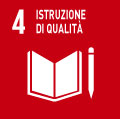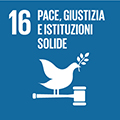- Docente: Lorenzo Zambernardi
- Crediti formativi: 8
- SSD: SPS/04
- Lingua di insegnamento: Inglese
- Modalità didattica: Convenzionale - Lezioni in presenza
- Campus: Forli
- Corso: Laurea Magistrale in International Politics and Economics (cod. 5702)
-
dal 24/09/2024 al 10/12/2024
Conoscenze e abilità da conseguire
After an introduction on the main theories of international relations (i.e. realism, liberalism, constructivism) and on some key concepts such as the balance of power and hegemony, the course examines some of the most important issues of current international affairs. In particular, it explores a series of empirical phenomena and themes such as inter-state wars, civil conflicts, peace building, conflict resolution, terrorism, and drone warfare. At the end of the course, students are expected to understand the fundamental aspects and the distinctive elements of a variety of issues in the current world. Finally, students will be able to apply complex theoretical tools to the empirical reality.
Contenuti
This course offers an introduction to the study of some of the major security issues in the contemporary world. In particular, it explores a series of empirical phenomena and themes in light of the most important concepts and theories in international relations theory. Students are expected to learn why countries go to war as well as why groups use terrorism. They will also acquire knowledge on nuclear proliferation, the prospects and pitfalls of military intervention, and on the role of technology and robotics (from nuclear weapons to unmanned drones) in threatening and strengthening the international order. At the end of the course, students are expected to understand the fundamental aspects and the distinctive elements of a variety of security issues in the current world. Finally, students will be able both to examine security threats and to devise the most appropriate policy response.
Testi/Bibliografia
Lectures:
1) Introduction
- Simon Leys, 2013, "The Idea of the University", in S. Leys, The Hall of Uselessness, New York Review of Books, pp. 461-464.
2) What's IR for?
- Lorenzo Zambernardi, 2016, “Politics is too important to be left to political scientists,” European Journal of International Relations, 22, 1, 3-23.
3) Security as a Multidimensional Concept
- Emma Rotschild, “What is Security?,” Daedalus, Vol. 124, No. 3, (Summer, 1995), pp. 53-98.
- John Mueller & Mark G. Stewart, “Terrorism and Bathtubs: Comparing and Assessing the Risks”, Terrorism and Political Violence, published online 28 December 2018.
4) Power Politics
- Thucydides, “The Melian Dialogue,” The Peloponnesian War, V, 84-114.
5) Inter-state conflicts I
- Geoffrey, Blaney, The Causes of War, New York, The Free Press, Ch. 8.
- Azar Gat , “The Changing Character of War”, in Hew Strachan and Sibylle Scheipers (eds) The Changing Character of War; available at https://academic.oup.com/book/6028?searchresult=1
6) Inter-state conflicts II: the war in Ukraine
John J. Mearsheimer, "Why the Ukraine Crisis Is the West’s Fault", Foreign Affairs, 2014; dshttps://www.mearsheimer.com/wp-content/uploads/2019/06/Why-the-Ukraine-Crisis-Is.pdf.
John J. Mearsheimer, "Playing with Fire in Ukraine", Foreign Affairs, 2022.
7) Nuclear Weapons
- Sagan, Scott D. – Waltz, Kenneth N., 2003. The Spread of Nuclear Weapons: A Debate Renewed. Edition 2. USA: W.W. Norton & Company Inc, Chapters 1-2.
8) The contemporary international system
Rodrik, Dani; Walt, Stephen M, "How to Build a Better Order: Limiting Great Power Rivalry in an Anarchic World", Foreign Affairs, Vol. 101, 5, (Sep/Oct 2022): 142-155.
John Mearsheimer, "Bound to Fail: The Rise and Fall of the Liberal International Order", International Security, Volume 43, Issue 4, Spring 2019, pp.7-50.
9) Hegemonic rivalry
- Robert Gilpin, 1988, “The Theory of Hegemonic War,” Journal of Interdisciplinary History, 18, 4, 591-613.
- G. Allison, “The Thucydides Trap”, The Atlantic, September 24, 2015.
10) Mid-Term
- No reading
11) Armed Conflicts: nature, geography, and lethality
Davies, S., Pettersson, T., & Öberg, M. (2023). Organized violence 1989–2022, and the return of conflict between states. Journal of Peace Research, 60(4), 691-708.
12) Civil War I
- Stathis N. Kalyvas, “The Changing Character of Civil Wars, 1800–2009”, in Hew Strachan and Sibylle Scheipers (eds) The Changing Character of War, Ch. 11; available at http://www.oxfordscholarship.com.ezproxy.unibo.it/view/10.1093/acprof:osobl/9780199596737.001.0001/acprof-9780199596737-chapter-12
- Barbara F. Walter, The New New Civil Wars Annual Review of Political Science 2017 20:1, 469-486
13) Terrorism I
- The United States is a Leading Terrorist State: An Interview with Noam Chomsky. https://monthlyreview.org/2001/11/01/the-united-states-is-a-leading-terrorist-state/.
-D'Alema: "Definire i talebani terroristi è una stupidaggine", HuffPost, 11 settembre 2021; https://www.huffingtonpost.it/entry/dalema-definire-i-talebani-terroristi-e-una-stupidaggine_it_613c5fdde4b00ff836ecffa6.
14) Terrorism II
- Andrew H. Kydd, Barbara F. Walter; The Strategies of Terrorism. International Security2006; 31 (1): 49–80.
- Freedman, Lawrence. “Terrorism as a Strategy.” Government and Opposition 42, no. 3 (2007): 314–39.
15) Insurgency and COIN
- D., Galula, Counterinsuregency Warfare: Theory and Practice, Westport, Praeger, Ch. 1, 4, 5, 6, 7.
- Lorenzo Zambernardi, "Counterinsurgency's Impossible Trilemma", Washington Quarterly, 33, 3, pp. 21-34.
- A. Mack, "Why Big Nations Lose Small Wars", World Politics, 27, 2, 1975, pp. 175-200.
16) Drone warfare
- G. Chamayou, Drone Theory, London, Penguin.
17) The European Radical Right
18) The longest war: the conflict in Afghanistan
- Theo Farrell, ‘Unbeatable: Social Resources, Military Adaptation, and the Afghan Taliban [https://doi.org/10.15781/T22B8VW1N],’ Texas National Security Review, vol. 1, no. 3 (2018): 58-75.
19) Israel-Hamas War
- Freilich, C. (2024). The War in Gaza One Year On: An Interim Assessment. Israel Journal of Foreign Affairs, 1–13.
20) Final exam
- No reading
Metodi didattici
Lectures
“In considerazione della tipologia di attività e dei metodi didattici adottati, la frequenza di questa attività formativa richiede la preventiva partecipazione di tutti gli studenti ai Moduli 1 e 2 di formazione sulla sicurezza nei luoghi di studio, [https://elearning-sicurezza.unibo.it/] in modalità e-learning.Modalità di verifica e valutazione dell'apprendimento
Attending students: two written exams (3 questions in each exam) during the course
Non-attending students: written (from 5 to 10 questions depending on the nature of the questions) and oral exams
Non-attending students must study also the following book:
Zambernardi, Lorenzo, Life, Death, and the Western Way of War, Oxford, Oxford University Press, 2022,
Strumenti a supporto della didattica
Power Point, Video Clips
Orario di ricevimento
Consulta il sito web di Lorenzo Zambernardi
SDGs




L'insegnamento contribuisce al perseguimento degli Obiettivi di Sviluppo Sostenibile dell'Agenda 2030 dell'ONU.
